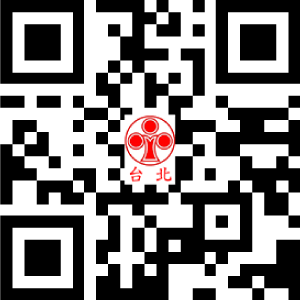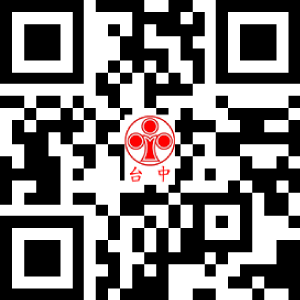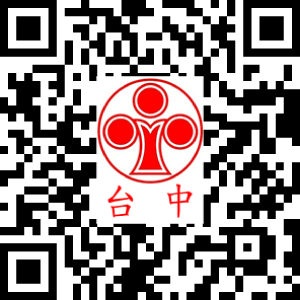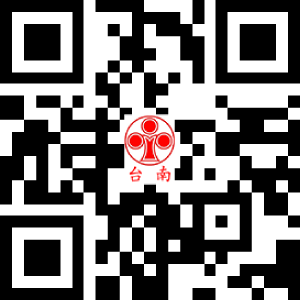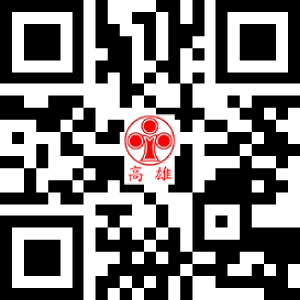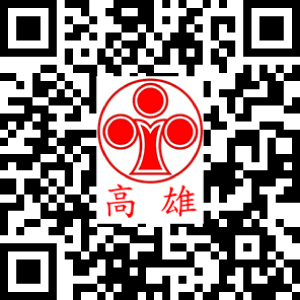
Introduction to the Amended Patent Examination Guidelines for Design Patents
The Taiwan Intellectual Property Office completed the amendments to Chapters 1, 2, 3, 7, 8 and 9 of Part 3 “Substantive Examination for Design Patents” of the Patent Examination Guidelines (hereinafter referred to as the “amended Guidelines”).
More Details
BY TOMMY C. C. TSAI
The Taiwan Intellectual Property Office completed the amendments to Chapters 1, 2, 3, 7, 8 and 9 of Part 3 “Substantive Examination for Design Patents” of the Patent Examination Guidelines (hereinafter referred to as the “amended Guidelines”). The amended Guidelines became effective on November 1, 2020.
The amendments primarily relax the disclosure requirements for the specification and drawings of a design patent application, clearly prescribe that architectural designs and interior designs belong to eligible subject matters for a design patent, relax the requirements for filing divisional design application(s), and revise the regulations pertaining to graphic image designs, as well as other modifications. The amendments are summarized in the following:
1. The disclosure requirements for the specification and drawings are relaxed.
Paragraphs 1 and 2 of Rule 53 of the Enforcement Rules of the Patent Act prescribe: “In a patent application for design, the drawing(s) shall contain sufficient views so as to fully disclose the appearance of the claimed design; where the design is three-dimensional, the drawing(s) shall contain a perspective view; where the design is applied to a boundless plane in form, the drawing(s) shall contain an element view. The views stated in the preceding paragraph may include a perspective view, a front view, a rear view, a left side view, a right side view, a top view, a bottom view, a plan view, an element view, or other auxiliary views.”
According to the previous edition of the Patent Examination Guidelines (hereinafter referred to as the “previous Guidelines”), the so-called “sufficient drawings” means that the drawings shall sufficiently disclose each view of a claimed design, such that the overall appearance of the claimed design can be fully disclosed. However, a view can be omitted under any of the following situations; otherwise the drawings will be considered not to sufficiently disclose the design:
(1) Where some of the views are identical or symmetric;
(2) Where an ordinary consumer would not notice a specific view of the design when purchasing or utilizing an article to which the design is applied, or where a view is completely planar and contains no design features;
(3) Where an article is extremely thin such that an ordinary consumer would not notice a view showing the thin side when purchasing or utilizing the article; or where a view merely shows a simple cross-section containing no design features.
On the contrary, based on the amended Guidelines, the omission of views from the drawings is not limited to the conditions provided in the previous Guidelines. Rather, in principle, views that are not contained in the drawings will be simply considered to form no part of the design, and the specification is not required to state the reasons for omitting these views. In principle, according to the amended Guidelines, if a view is not disclosed in the drawings, such view of the design will be deemed as a unclaimed portion and the claimed design would accordingly be categorized as a partial design. However, under any of the following situations, a related statement must be included in the specification: (1) where some of the views are identical or symmetric; and (2) where an article is extremely thin such that an ordinary consumer would not notice a view showing the thin side when purchasing or utilizing the article.

(An example showing an extremely thin article.
Source: Patent Examination Guidelines for design patents)
It shall be noted that, even for a partial design, the views in the drawings must sufficiently disclose all the features of the claimed portion of the design. If the drawings are insufficient to disclose the overall appearance of the claimed portion or unable to define the scope of protection of the claimed design, a person having ordinary skill in the art would be unable to understand and carry out the claimed design based on the limited drawings and the patent application would be considered not to fulfill the requirement of “enablement.” Taking the following drawings showing a water filter, which we reproduce from the Patent Examination Guidelines, as an example, the drawings contain a perspective view and a top view. Since the exact contour or configuration of the design viewed from the front and sides cannot be determined merely based on the perspective and top views, and it cannot definitely be determined whether the omitted front, rear, left side and right side views belong to the parts which the design intends to claim, under this circumstance, the omitted content cannot be directly regarded as “parts which do not form part of the claimed design.” Rather, the disclosure of the drawings will be deemed not to fulfill the requirement of “enablement.” It should also be noted that if supplementary views are intended to be submitted to overcome the indefiniteness issue, the applicant has to pay attention not to introduce new matters which extend beyond the scope of content disclosed in the specification or drawing(s) as filed.
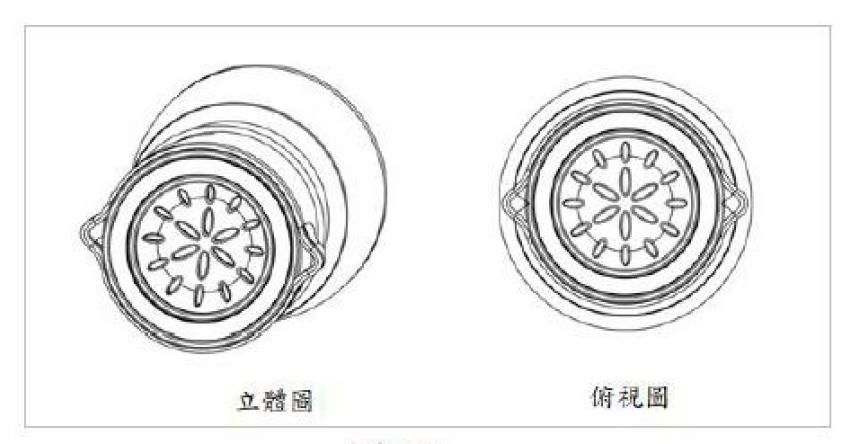
(An example showing the drawings are insufficient to disclose the overall appearance of the claimed portion.
Source: Patent Examination Guidelines for design patents)
2. Architectural and interior designs are clearly specified as eligible subject matters for a design patent.
The Guidelines of 2005 specify that an architectural structure such as a house or a bridge, or a realty design such as an interior design or a garden design should be deemed unpatentable. The above regulations were deleted in the Guidelines of 2013. The amended Guidelines further clearly prescribe that “an architectural structure, a bridge or an interior design, etc.” may also be an article to which a design is applied.

(An example showing a design patent claiming an interior design.
Source: TW D179715, PORTION OF A ROOM, APPLE INC.)

(Another example showing a design patent claiming an interior design.
Source: the Instruction Manual for Drafting Design Patent Drawings published by the TIPO)
3. The requirements for filing a divisional application based on a design patent application are relaxed.
According to the previous Guidelines, if the drawings originally filed only disclose one design applied to one article and do not include any other reference views or state-of-use views, a divisional application may not be filed because the drawings do not clearly disclose substantially two or more designs.
In order to ensure that the requirements for a divisional design application conform to those for effecting amendments and conversions, i.e., “an amendment/a conversion should not extend beyond the scope of content disclosed in the specification or drawing(s) originally filed,” the amended Guidelines prescribe that if the content disclosed in the specification or drawings originally filed may cover two or more designs, even if only one design is claimed, the applicant may file divisional application(s) for one or more designs clearly disclosed in the specification or drawings originally filed (for example, a design specifically disclosed in the reference views, a design of a component of the article embodying the claimed design or a design with a scope of protection different from that of the parent application).
According to the amended Guidelines, an applicant may file divisional application(s) during pendency of the parent application by changing a part of the solid lines in the drawings originally filed to broken lines, or vice versa. However, the divisional application still has to conform to the requirement of “not extending beyond the scope of content disclosed in the specification or drawing(s) originally filed.”
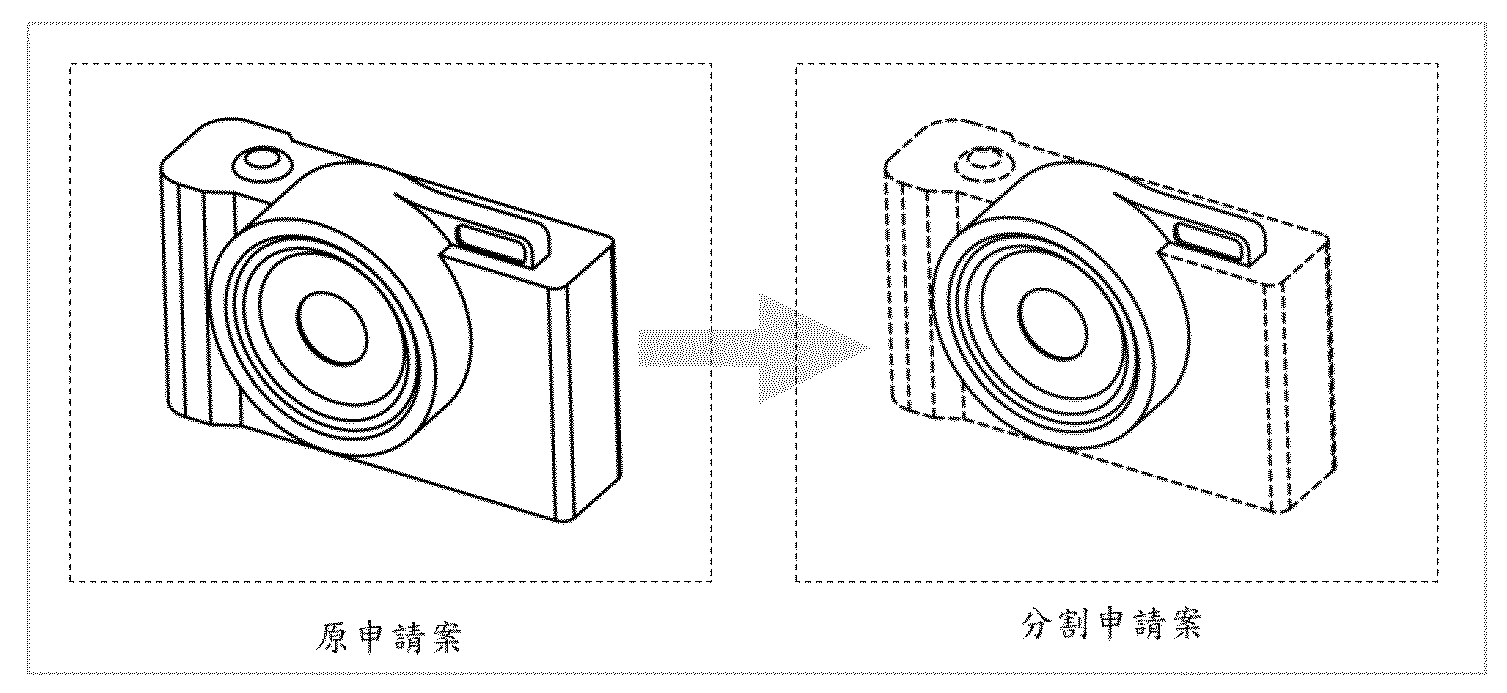
Camera → Portion of a camera
(Another example showing a possible design patent application.
Source: Patent Examination Guidelines for design patents)
4. The regulations for graphic image designs are amended.
Paragraph 2 of Article 121 of the Patent Act prescribes that computer generated icons (Icons) and a graphic user interface (GUI) applied to an article may also be filed to obtain a design patent. According to the previous Guidelines, the article may be a screen, monitor, display panel, etc. However, these articles still cannot cover a graphic image design presented by innovative technology such as a projection, virtual reality, etc. Further, when an applicant exploits patent rights for a graphic image design, an accused product is usually an intangible software or program.
Based on the above reasons, the amendment was made with reference to chapter 12 of the Patent Examination Guidelines for Invention Patents “Computer Software Related Invention,” including relaxing the restriction that a graphic image design has to be applied to a tangible article, which allows an applicant to designate a computer program product as the article to which a graphic image design is applied, such that the design can cover a tangible article as well as an intangible software or program.
Meanwhile, the amended Guidelines also correspondingly include amendments to the disclosure requirements for the specification and drawings, which allow an applicant for a graphic images design to omit broken lines depicting a disclaimed screen, monitor, display panel on which such graphic image is shown.
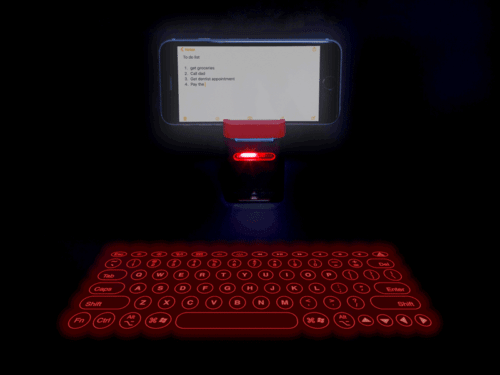
(An example showing a virtual laser projection keyboard.
Source: https://nerdknowbetter.com/best-virtual-laser-keyboards/)
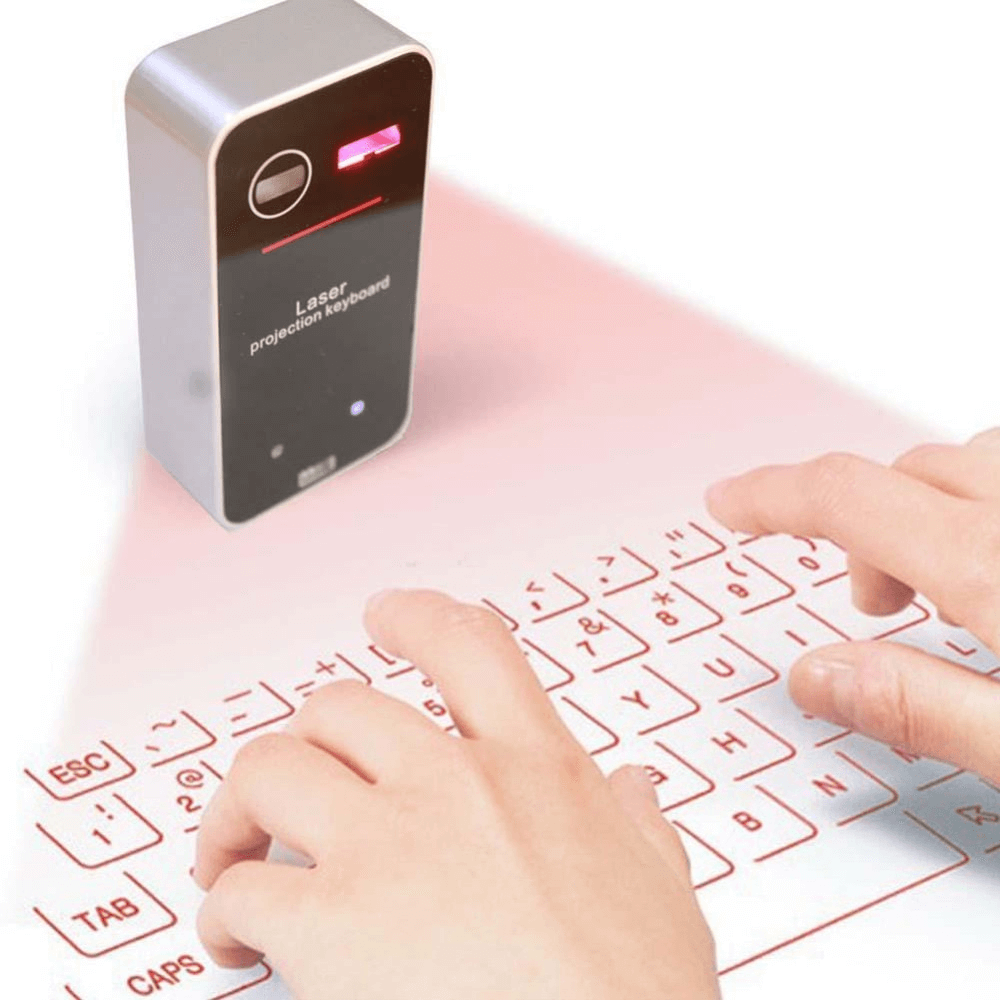
(Another example showing a virtual laser projection keyboard.
Source: https://gethomely.co.uk/product/portable-bluetooth-virtual-laser-keyboard-projector/)
5. Miscellaneous points.
(1) Additional regulations for the disclosure of colors.
Paragraph 1 of Article 121 of the Patent Act prescribes that “design” means the creation made in respect of the shape, pattern, color, or any combination thereof, of an article as a whole or in part by visual appeal.
When an applicant uses black-and-white photos (or computer-generated drawings in grayscale) to present the shape or pattern of a claimed design, to prevent the claimed design from being interpreted as containing black, white or gray as colors, the amended Guidelines prescribe that the applicant may add a statement “The subject design is represented by black-and-white photos (or computer-generated drawings in grayscale). The tone shown in the drawings only helps to show the contour of the subject design, but the subject design does not claim the colors of black, white or gray as shown in the drawings” into the specification.
(2) Adding a description of the shape of an article created solely for a functional purpose.
Article 124 of the Patent Act prescribes that a design patent shall not be granted if the shape of an article is solely dictated by its function.
The amended Guidelines specifically provide that if the shape of an article is merely dependent on the basic shape of a “must-fit” portion of a known article, and the design as a whole is related to a consequential outcome for connecting or matching the known article but is not associated with any creative concept, such design will be considered unpatentable.
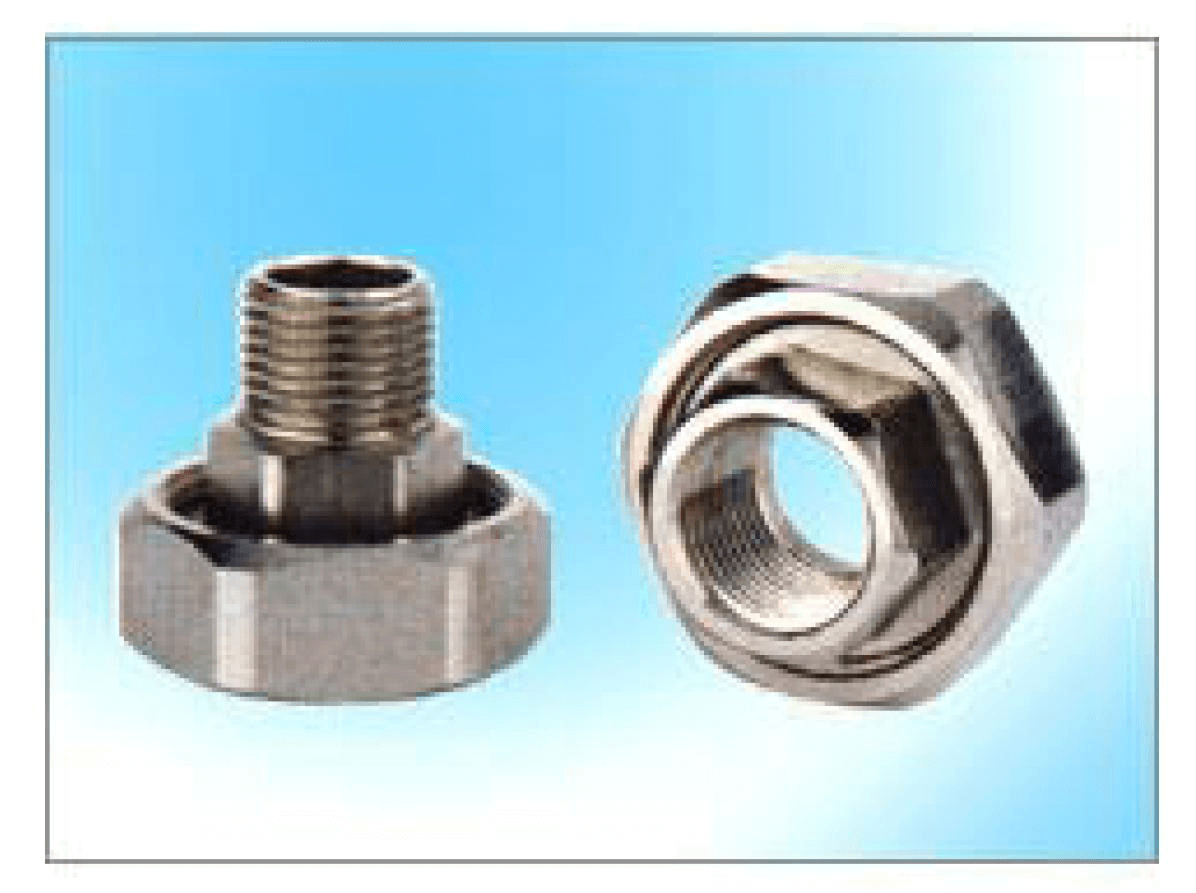
(An example showing two designs with a “must-fit” feature.
Source: http://tzjhfm.cn.alibaba.com/athena/companyprofile/tzjhfm.html)
(3) Amending principles for determining novelty and creativeness of a design containing a color(s).
Under the amended Guidelines, if the difference between the claimed design and the prior art is a single color from the conventional color system, the application or change of such color in the design should be deemed de minimis and not to affect the overall visual impression. In this case, the claimed design would be determined not to possess novelty.
On the other hand, if the claimed design contains two or more colors, said design would be considered to possess novelty. However, it should be further determined whether the overall design presented by the combination of the colors would be easily conceived by a person having ordinary skill in the art.
When determining if such combination of the colors would be easily conceived, it should be taken into consideration whether these colors provide the design as a whole with a unique visual effect. If the combination of the colors does not provide the design with a unique visual effect, such combination should be deemed easily conceived by a person having ordinary skill in the art and not to possess creativeness.
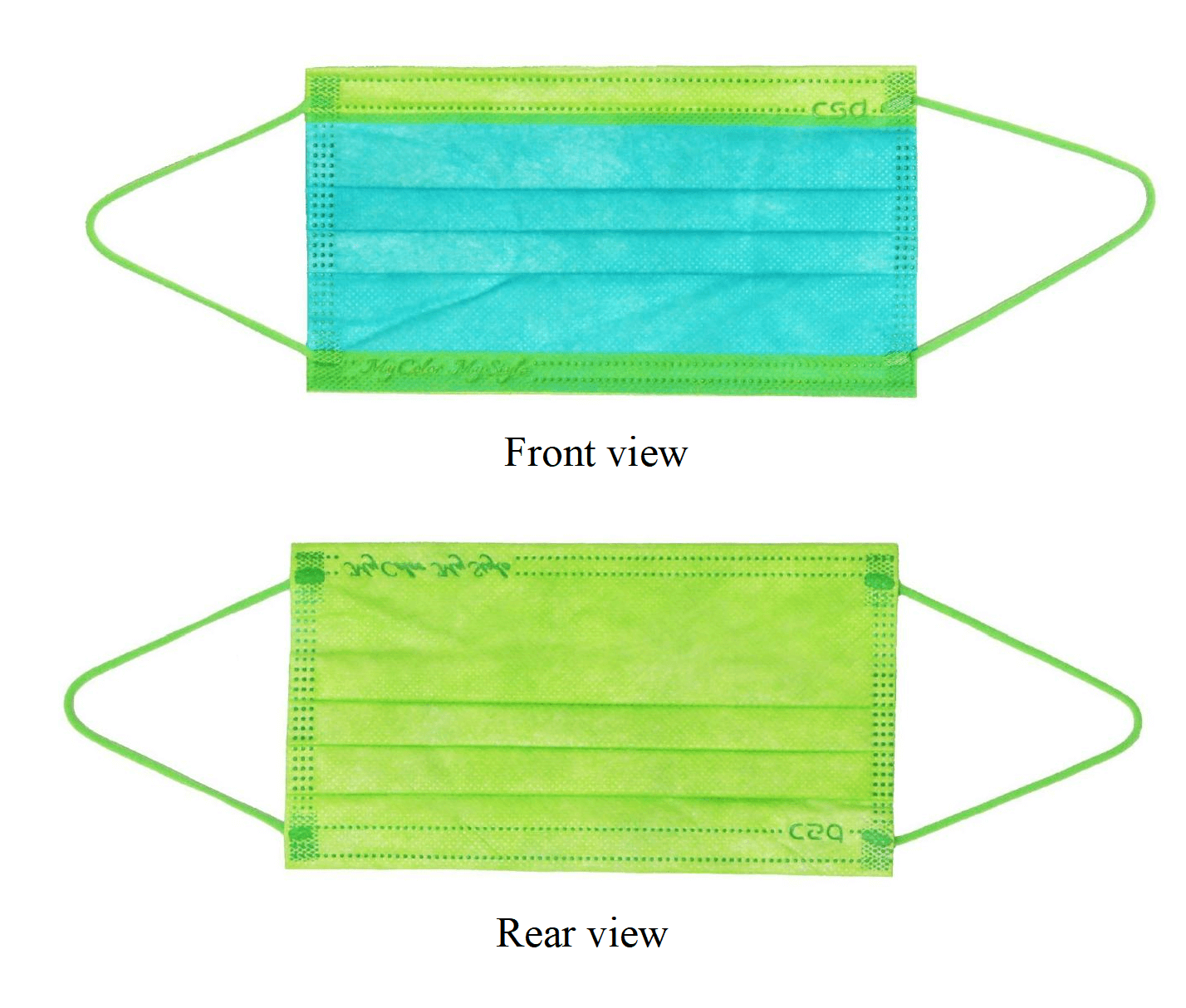
(An example showing a design patent claiming two or more colors.
Source: TW D210829, FACE MASK, CHANG, JONATHAN TEH CHENG)
In conclusion, the amended Guidelines provide applicants with a more flexible filing strategy. Also, the scope of enablement, which is provided to a person having ordinary skill in the art by the disclosure of the specification and drawings, will be more commensurate with the scope of protection sought by the claim.
